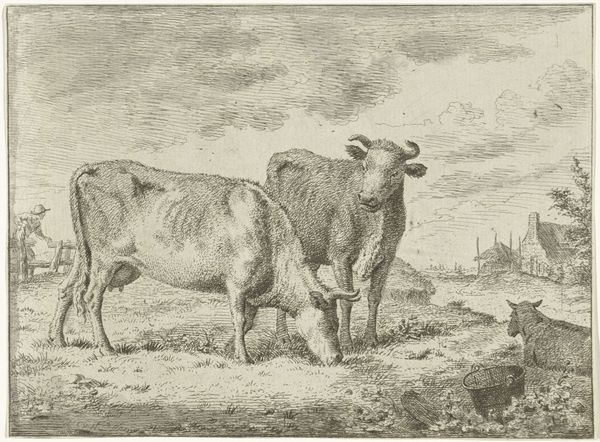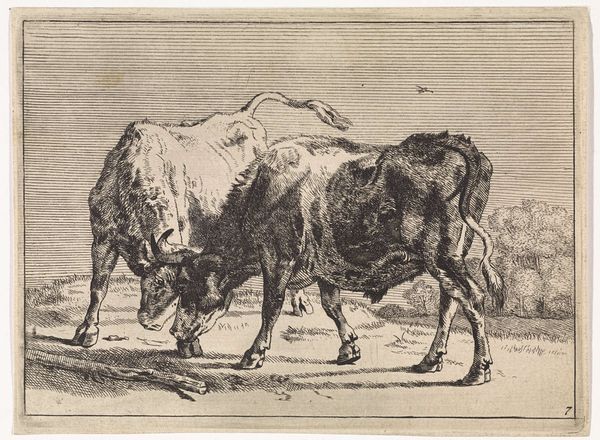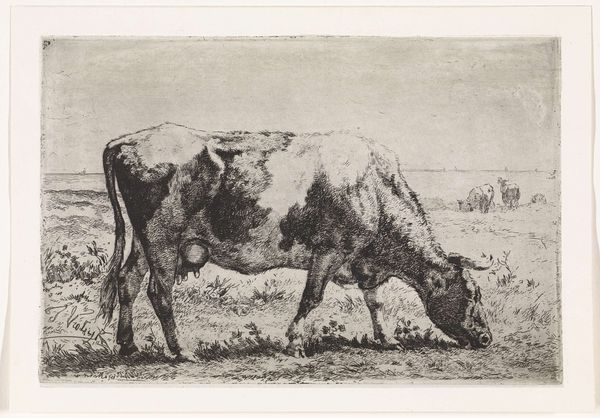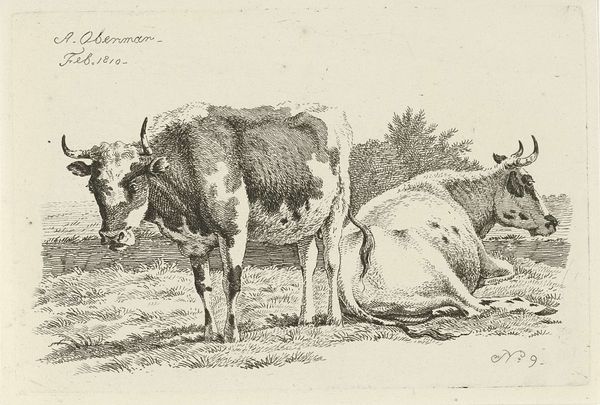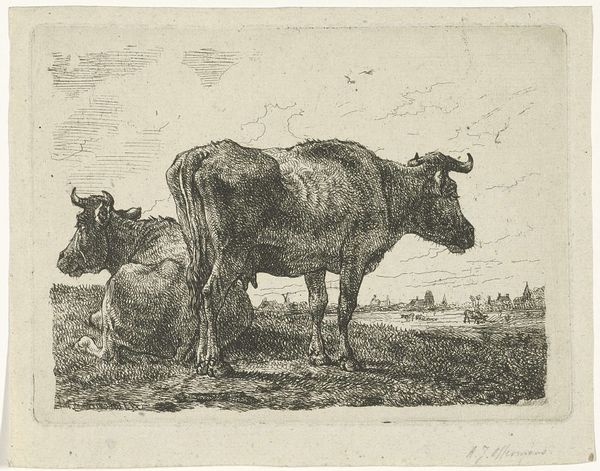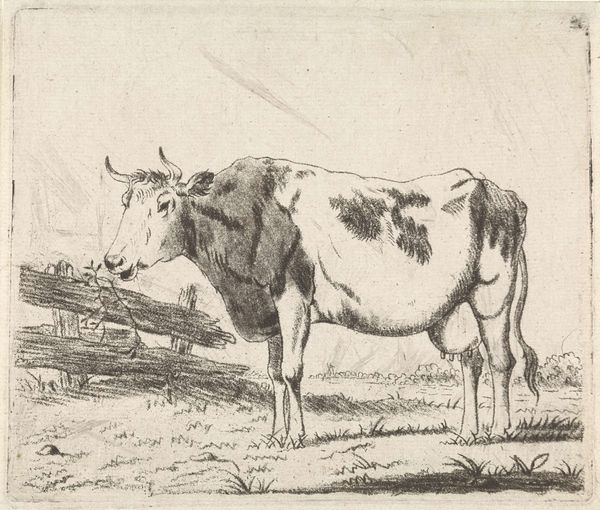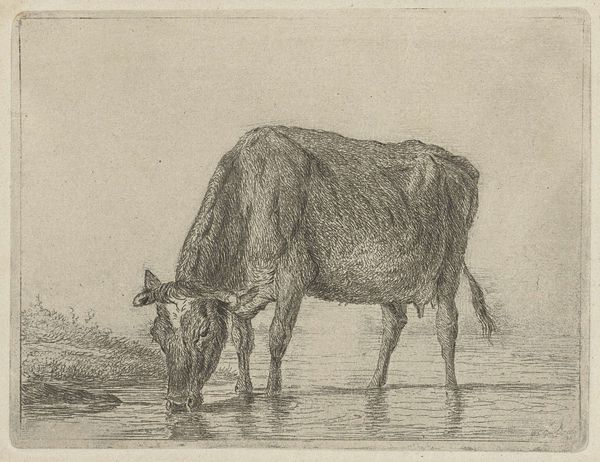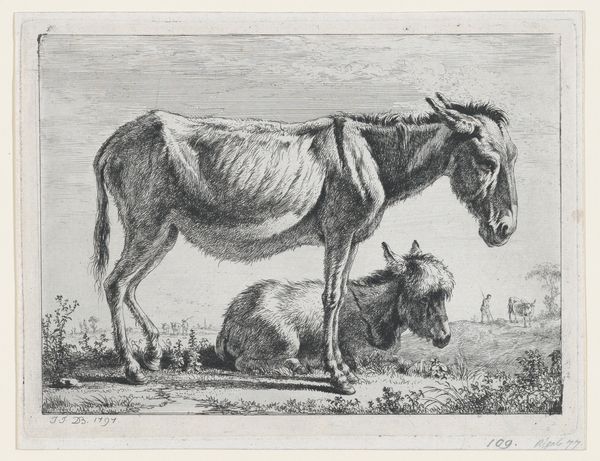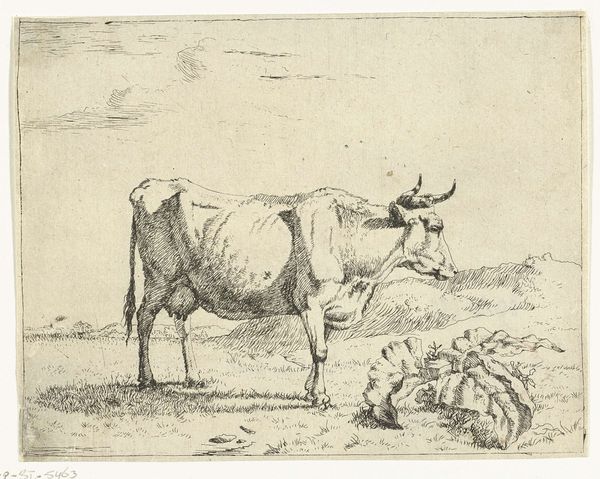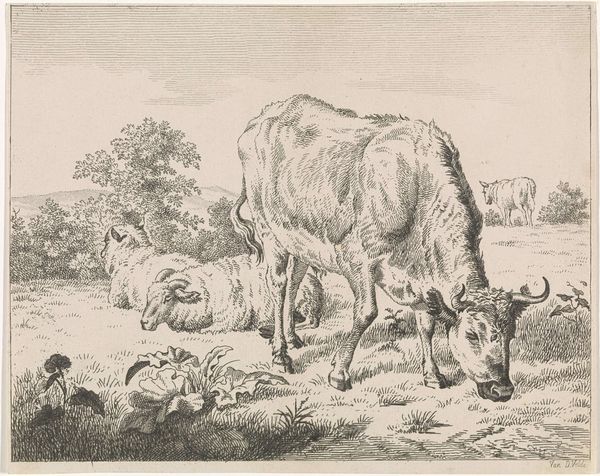
# print
#
landscape
#
genre-painting
#
realism
Dimensions: height 115 mm, width 165 mm
Copyright: Rijks Museum: Open Domain
Curator: Looking at "Grazende koe bij een schutting," or "Grazing Cow by a Fence," made in 1809 by Anthony Oberman and currently held at the Rijksmuseum, what are your initial thoughts? It’s a print, quite detailed, portraying a domestic scene. Editor: Oh, it's instantly peaceful, pastoral almost. Just a simple moment, beautifully captured. You can practically hear the gentle chewing and the buzzing of nearby insects, can’t you? It reminds me of childhood summers, the slow pace of things. But in black and white it is also somehow stripped bare, reduced. Curator: Exactly, and stripping bare relates to its status as a print. As a work of material culture, we should also think about how prints like this facilitated wider distribution and consumption of images, playing a significant role in shaping perceptions of rural life and landscape in early 19th-century Dutch society. Did images like this one create the impression, at least, of harmony? Editor: Definitely. The fence suggests enclosure, cultivation, yet the cow is utterly unbothered, munching away, grounded and real. But let’s be real – it's also idealized, don’t you think? The labor behind food production and animal husbandry is entirely obscured, as in so many images like this. Is that deliberate, a feature of landscape aesthetics? Curator: I would say, unequivocally yes. But notice how the printmaking technique itself - the line work, the layering - lends itself to an honest depiction of materiality; earth, wood, and animal form, emphasizing a down-to-earth view, while deliberately avoiding painterly or high art techniques to portray farm life. It acknowledges a material foundation, almost radical for its time. Editor: Perhaps... but while acknowledging it in one sense, it obscures other elements! Though I find myself drawn to the simplicity, the honesty in the cow’s portrayal, you have to admit it makes the scene feel inviting and pleasant, rather than presenting the unvarnished experience of farm work. But look closer -- that technique you just mentioned adds real depth to it; light flickers through leaves near the fence! It becomes so much more than just 'cow eats grass,' doesn't it? Curator: It absolutely does, inviting questions about the economy and experience of early 19th-century farm life. We began with this particular animal at rest, and that took us on quite a journey of thought. Editor: Indeed. Thank you for the journey; it seems we're more aligned than initially expected! A refreshing twist in our perspectives, indeed.
Comments
No comments
Be the first to comment and join the conversation on the ultimate creative platform.

